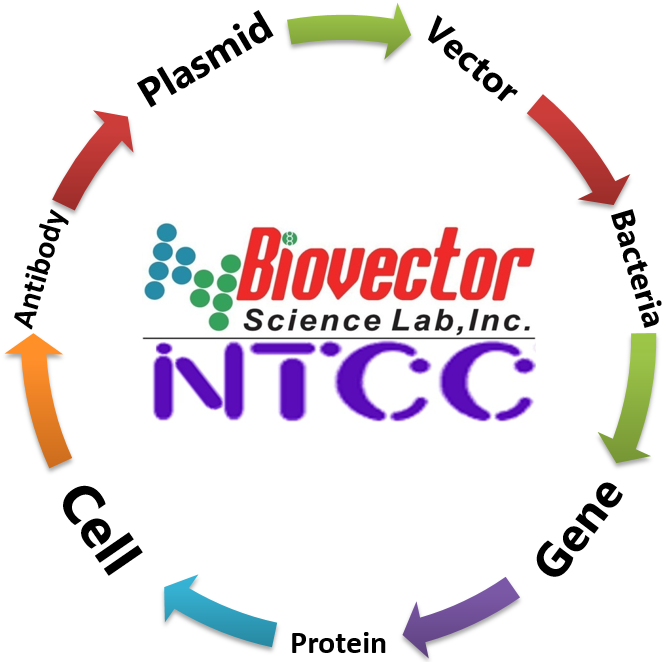XL1-Red Escherichia coli DNA修復缺陷型菌株NTCC (E. coli) strain BioVector典型培養物保藏中心
- 價 格:¥49850
- 貨 號:NTCC-XL1-Red Ecoli
- 產 地:北京
- BioVector NTCC典型培養物保藏中心
- 聯系人:Dr.Xu, Biovector NTCC Inc.
電話:400-800-2947 工作QQ:1843439339 (微信同號)
郵件:Biovector@163.com
手機:18901268599
地址:北京
- 已注冊
The NTCC XL1-Red strain is a specialized Escherichia coli (E. coli) strain primarily used in molecular biology for random mutagenesis and the construction of gene libraries with increased diversity.
Here's a breakdown of its key features and applications:
Key Features:
DNA Repair Deficient: The core characteristic of XL1-Red is that it's deficient in three major DNA repair pathways:
mutS: Involved in mismatch repair.
mutD (also known as dnaQ): Involved in the proofreading activity of DNA polymerase III.
mutT: Involved in preventing the incorporation of 8-oxo-dGTP (an oxidized guanine) into DNA.
Increased Mutation Rate: Due to these deficiencies in DNA repair, XL1-Red has a significantly higher spontaneous mutation rate (reportedly ~5000-fold higher than wild-type E. coli). This elevated mutation rate is the primary reason for its use.
Commercial Availability: It is a commercially available strain, often sold as competent cells (e.g., by Biovector NTCC Inc.).
Tetracycline Resistance: It's typically tetracycline resistant (TetR), though this marker can sometimes be unstable due to the high mutation rate.
Purpose and Applications:
The main purpose of the XL1-Red strain is to introduce random point mutations into a cloned gene of interest within a plasmid. This is particularly useful for:
Directed Evolution/Protein Engineering:
Generating diversity: By propagating a plasmid containing a target gene through XL1-Red cells, random mutations accumulate in the gene during each round of DNA replication. This creates a library of mutated genes, which can then be screened or selected for desired phenotypes (e.g., altered enzyme activity, improved stability, altered substrate specificity).
"Random mutagenesis without PCR": Unlike error-prone PCR, which introduces mutations in vitro, XL1-Red allows for in vivo random mutagenesis, which can be simpler and doesn't require specific subcloning steps after mutagenesis.
Functional Genomics and Proteomics:
Investigating the function of specific genes or proteins by creating libraries of variants and observing the effects of different mutations.
Library Construction:
Creating diverse DNA or protein libraries for screening applications (e.g., phage display libraries).
How it works (Simplified):
The plasmid containing the gene you want to mutagenize is transformed into XL1-Red competent cells.
The cells are grown in liquid culture, allowing the plasmid to replicate numerous times.
Due to the impaired DNA repair mechanisms in XL1-Red, errors made by DNA polymerase during replication are not efficiently corrected, leading to the accumulation of random point mutations within the plasmid (and particularly within the gene of interest, which is being replicated).
After several rounds of growth (often 30 generations or more), the mutagenized plasmids are isolated from the XL1-Red cells.
This library of mutagenized plasmids can then be transformed into a different, stable E. coli strain (e.g., XL1-Blue or a screening strain) for expression, screening, or selection of desired mutants.

Advantages:
Simplicity: It's a relatively straightforward method for introducing random mutations.
No specialized enzymes/reagents: It doesn't require specific error-prone polymerases or altered dNTP ratios, unlike error-prone PCR.
Even distribution of mutations: Mutations tend to be randomly distributed throughout the gene.
Considerations/Limitations:
Unstable Mutator Phenotype: The mutations that cause the hypermutator phenotype can sometimes revert or be lost, leading to a decrease in mutation rate over extended culture periods. Monitoring growth and mutation rates can be important.
Growth Rate: Mutator strains often have slower growth rates compared to wild-type strains due to the burden of accumulated mutations.
Mutation Frequency Control: While the mutation rate is high, precisely controlling the number of mutations per gene can be challenging and typically requires optimizing the number of growth cycles.
Not for all mutagenesis needs: For highly targeted or specific mutagenesis (e.g., site-directed mutagenesis), other methods are more appropriate.
http://www.biovector.net/
- 公告/新聞




